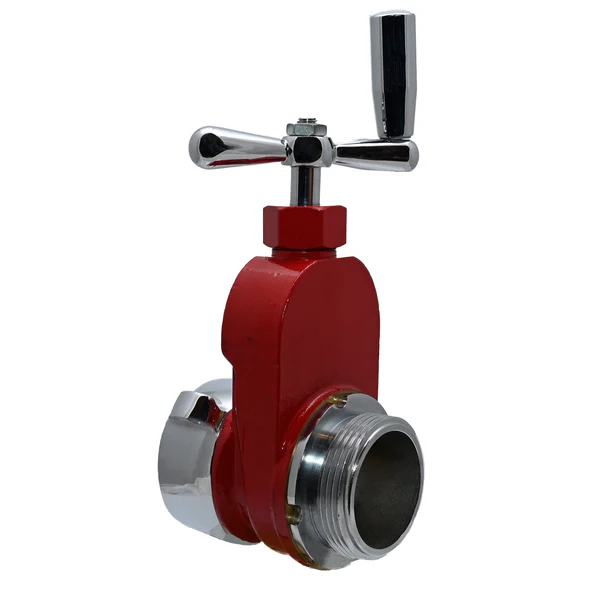A hydrant gate valve is a robust and reliable valve designed to control the flow of water in fire hydrant systems, municipal water lines, and underground pipelines.
It is typically installed on fire hydrant branches or water mains, allowing maintenance, isolation, and pressure control without interrupting the main water supply.

Hydrant gate valves are a critical component in firefighting infrastructure, ensuring that fire hydrants can be safely serviced and operated when needed.
Table of Contents
Toggle⚙️ How a Hydrant Gate Valve Works
The valve operates using a rising or non-rising stem mechanism connected to a wedge or resilient-seated gate.
When the handwheel or actuator is turned, the gate moves vertically to open or close the water passage, providing a full-bore flow when fully open and tight shut-off when closed.
This design minimizes flow resistance, making it ideal for high-flow firefighting applications where quick access to water is vital.
💧 Key Features and Benefits
| Feature | Description |
|---|---|
| Full-Bore Waterway | Allows unobstructed water flow to fire hydrants. |
| Resilient-Seated Design | Ensures tight shut-off and leak-free performance. |
| Rising/Non-Rising Stem Options | Suitable for above-ground or underground installations. |
| Corrosion-Resistant Coating | Epoxy powder coating provides long-term protection against rust. |
| Manual or Actuated Operation | Can be operated by handwheel, gearbox, or electric actuator. |
| Durable Construction | Designed for high-pressure and high-demand service conditions. |
🧱 Applications
Hydrant gate valves are widely used in:
Fire Protection Networks – Installed on fire hydrant lines for isolation and maintenance.
Municipal Water Distribution Systems – Control and isolation of water mains.
Industrial Firefighting Systems – Used in chemical plants, refineries, and factories.
Building Fire Systems – Installed in large commercial or residential complexes with dedicated hydrant networks.
🔩 Technical Specifications
| Parameter | Details |
|---|---|
| Size Range | DN50 – DN400 (2” – 16”) |
| Pressure Rating | PN10 / PN16 / 125PSI / 150PSI |
| Body Material | Ductile Iron (GGG50) / Cast Iron (GG25) |
| Wedge Material | Ductile Iron with EPDM or NBR Rubber Coating |
| Stem Material | Stainless Steel (AISI 304 / 316) |
| Coating | Fusion-bonded Epoxy, Red or Blue |
| Operation | Handwheel, T-key, Gearbox, or Electric Actuator |
| Connection Ends | Flanged, Socket, or Mechanical Joint |
| Standard Compliance | AWWA C509 / C515, EN 1074, BS 5163 |
🚒 Types of Hydrant Gate Valves
Resilient Seated Gate Valve – Most common for modern fire hydrant systems, featuring rubber-coated gate for bubble-tight sealing.
Metal Seated Gate Valve – Used in high-temperature or abrasive water systems.
Underground Gate Valve – Equipped with extension rods and T-key operation for buried installation.
Post Indicator Gate Valve (PIV) – Provides visible open/close indication for fire protection systems.
🧰 Advantages of Using a Hydrant Gate Valve
Fast and Reliable Operation in emergency water systems.
Long Service Life with corrosion-resistant epoxy coating.
Ease of Maintenance, even in underground configurations.
Compatible with Fire Hydrant Standards (AWWA, EN, BS).
Ensures System Integrity by isolating sections for maintenance or repair.
🌍 Industries Served
Firefighting & Safety Systems
Municipal Water Supply
Oil & Gas Facilities
Power Plants
Industrial Water Treatment
📞 Conclusion & Call to Action
A hydrant gate valve plays a vital role in fire protection and water distribution networks, offering dependable flow control, low torque operation, and durable performance.
TOT Valve Solutions supplies high-quality hydrant gate valves designed to meet AWWA, EN, and BS standards, suitable for both above-ground and underground installations.
👉 Contact us today for technical datasheets, pricing, or OEM/ODM valve solutions for your fire protection or municipal water projects.
